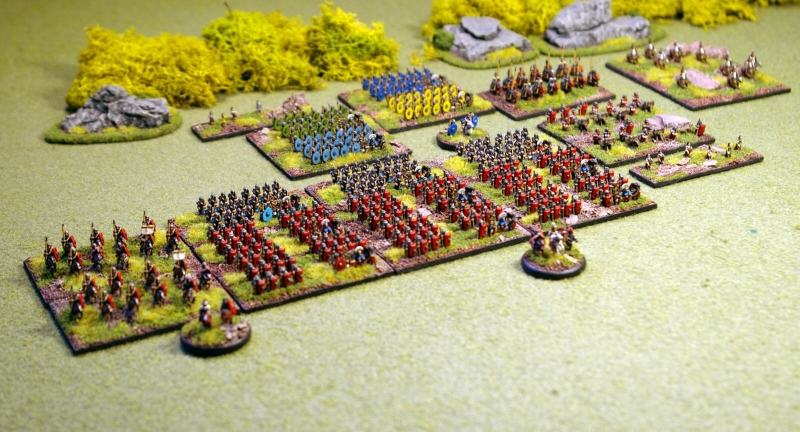Impetus and Basic Impetus share the same basing system, which is shown in the table below.

The number of figures on each base (=unit) is irrelevant for game purposes, but only matters for aesthetic reasons.
The "suitable" number of models may change depending on the scale of the miniatures, the depth of the base (especially in the case of Heavy Infantry)
and not least on the player's taste.
The sizes of the bases of Impetus and Basic Impetus correspond to the multiple of the bases of the most popular rules for this historical period. In practice,
we have multiplied the bases of these games by four (putting two in the front and two in the back) to create an Impetus/Basic Impetus Unit/Base, except in the case of the Skirmishers, Elephants and Artillerywomen (for which two side-by-side bases are sufficient).
Instead of suggesting the number of miniatures to put on each base, we consider it more effective to show you a few photos. It is easy to see the modelling possibilities that such a system provides. Think of each base as a small diorama!
















